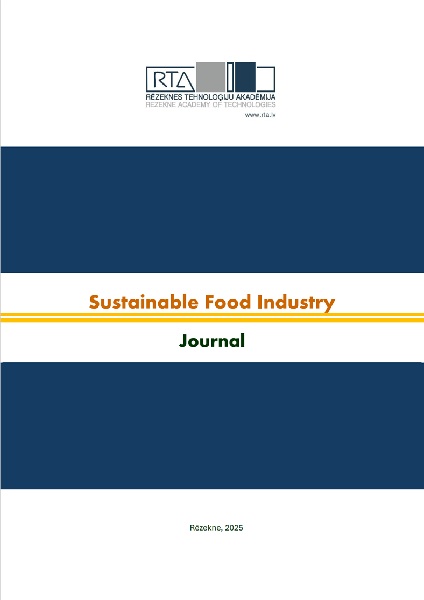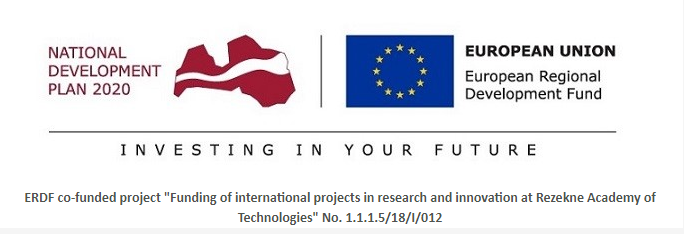INNOVATIVE SOIL LIMING AND FERTILIZER MEANS PRODUCTION TECHNOLOGY
DOI:
https://doi.org/10.17770/sfi2025.1.1.8361Keywords:
digestate, wood ash, mixturesAbstract
In addition to numerous factors, organic waste has a significant impact on increasing environmental pollution, which is an imperative for its solution. The goal of the work was to use the by-products of biogas production plants and cogeneration plants for soil fertilization, which allows to create a new innovative product from their mixtures. The preparation of the best mixtures applied and evaluated in greenhouses under production conditions was carried out at the companies JSC "Ziedi JP" and "Pampali". The production scheme of soil liming and fertilizer was developed and approved at both companies. The effectiveness of the composition of the mixtures was first tested on soils of different acidity in a greenhouse. The set of machines and aggregates required for the preparation and spreading of the new type of fertilizer on the field was made. Digestate, after complete development in bioreactors, is fed to the mechanical screw press separator, where it is divided into solid (dry matter 25 %<) and liquid (dry matter 3%>) fraction. The digestate of solid fractions is mixed with wood ash in portions in a screw-type mixer equipped with electronic scales. The ingredients are poured in parts so that the mixer mixes a uniform mass. After mixing, the new fertilizer is discharged from the mixer onto a conveyor belt and then into a pile, which is covered with a cover to reduce ammonium emissions. The use of the innovative soil fertility enhancer can be an effective way of recycling both products and can also be an environmentally friendly alternative to mineral fertilizers.
References
Adekunle, A.S., Ibitoye, S.E., Omoniyi, P.O. Jilantikiri, L.J. Sam-Obu, C.V Yahaya T., Mohammad, B.G. Olusegun, H.D. (2019) Production and Testing of Biogas Using Cow Dung, Jatropha and Iron Filins. J. of Bioresources and Bioproducts. V.4, I. 3, 143-148. https://doi.org/10.12162/jbb.v4i3.002.
Amery, F., Schoumans, O.F. (2014). Agricultural Phosphorus Legislation in Europe. Institute for Agricultural and Fisheries Research ILVO. 45 P.Augusto, L., Bakker, M.R., Meredieu, C. (2008). Wood ash applications to temperate forest ecosystems - potential benefits and drawbacks. Plant Soil, 181–198 https://doi.org/10.1007/s11104-008-9570-z.
Comission of the European Communities, (1991). Council Directive 91/676/EEC of 12 December 1991 concerning the protection of waters against pollution caused by nitrates from agricultural sources. Off. J.EUR Union.
Fuchs, W., Drosg, B. (2013). Assessment of the state of the art of technologies for the processing of digestate residue from anaerobic digesters. Water Sci. Technol. 67, p. 1984–1993.
Guilayn, F., Jimenez, J., Martel, J.-L., Rouez, M., Crest, M., Patureau, D. (2019). First fertilizing-value typology of digestates: a decision-making tool for regulation. Submitted to Waste Manag, p. 67-79. DOI: 10.1016/j.wasman.2019.01.032
Ingerslev, M., Skov, S., Sevel, L., Pedersen, L.B. (2011). Element budgets of forest biomass combustion and ash fertilisation – a Danish case-study. Biomass Bioenergy, 35, p. 2697–2704. ttps://doi.org/10.1016/j.biombioe.2011.03.018.
Möller, K., Müller, T. (2012). Effects of anaerobic digestion on digestate nutrient availability and crop growth: a review. Eng. Life Sci. 12, p. 242–257.
Perkiomaki, J., Fritze, H. (2005). Cadmium in upland forests after vitality fertilization with wood ash - a summary of soil microbiological studies into the potential risk of cadmium release. Biol. Fertil. Soils 41, p. 75–84. https://doi.org/10.1007/s00374-004-0816-5.
Pitman, R.M. (2006). Wood ash use in forestry - a review of the environmental impacts. Forestry. https://doi.org/10.1093/forestry/cpl041.
Silva, F.C., Cruz, N.C., Tarelho, L.A.C., Rodrigues, S.M. (2019). Use of biomass ash-based materials as soil fertilisers: critical review of the existing regulatory framework. J. Clean. Prod. 214, p. 112–124. https://doi.org/10.1016/j.jclepro.2018.12.268.
Downloads
Published
Issue
Section
License
Copyright (c) 2025 Aleksandrs Adamovičs

This work is licensed under a Creative Commons Attribution 4.0 International License.



